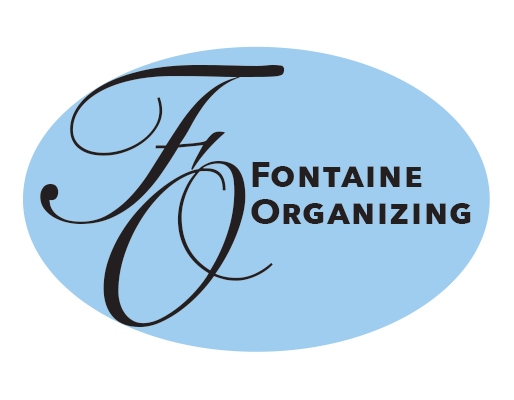Organizing Challenges of Old New England Homes
As a native Rhode Islander, I can’t help but be a fan of old New England homes. While my own house is a young 100 years old, I sometimes get to help clients in homes that are twice that age. To preserve the charm that’s original to these classic homes, homeowners often need to learn to live with features that make organizing and storage feel like a nightmare. From tiny, odd-shaped closets to damp and moldy basements, the challenges of these spaces require creative solutions to make the best use of the storage without compromising the home’s charm.
Common Challenges in Old New England Homes
Limited and Awkward Closets: These older homes were built before we could order anything we want on the internet and have it delivered almost immediately. Wardrobes were minimal, so the small, shallow, or awkwardly shaped closets were perfectly good. Some homes lack bedroom closets entirely.
Small Kitchens: Kitchens in these homes are often short on cabinet and drawer space. Add in a couple of modern appliances and suddenly there’s no room on the counter for food preparation.
Damp Basements and Unfinished Attics: Basements in New England homes are prone to moisture, bugs, and spiders, making them risky for storing items. Attics can be spacious and many are walk-ups, but they often have extreme temperature fluctuations. Sloped ceilings and chimney stacks can limit usable space.
Irregular Room Layouts: Angled walls, narrow hallways, and low ceilings create dead spaces that are difficult to utilize effectively.
Lack of Built-In Storage: Unlike modern homes, older New England homes rarely feature built-in shelving or pantry systems.
In damp New England basements, protect your belongings using plastic totes stored up off the floor.
Strategies for Effective Organizing & Maximizing Storage
Have Less Stuff: The first step to organizing any small space is to have less stuff. Declutter by keeping only essentials. When possible, prioritize keeping items that can serve multiple purposes instead of only single-use tools. The kitchen is a great place to find these types of items. If you are lacking pantry storage, consider improving your health and removing the need for pantry storage altogether by adopting a fresh, whole food diet. Donate, sell, or recycle anything that hasn’t been used for a long time and for which you have no concrete plans. It’s a lot easier to fit belongings into limited spaces when you don’t have a lot of belongings to begin with.
Use Multifunctional Furniture: Invest in furniture that doubles as storage. A bed with built-in drawers or a lift-up mattress can store linens, off-season clothing, or kids’ toys. Ottomans with hidden compartments are perfect for blankets, books, or knitting projects. In the dining room, consider a bench with under-seat storage instead of traditional chairs so you have a place for your placemats and napkins.
Leverage Vertical Space: Make use of wall height to compensate for limited floor space. Buy tall bookcases, install track shelving, or use floating shelves in living rooms, bedrooms, and kitchens. In closets, add stackable organizers or hanging rods to double the storage capacity. Wall-mounted hooks in entryways and kitchens can hold bags, coats, or dog leashes. Cookware can be hung from a ceiling rack.
Utilize Bins for Hard-to-Reach Spaces: Awkward corners, deep closet shelves, or sloped attic spaces can be better utilized with clear, labeled bins. These make it easy to access items without digging through piles; just pull the whole bin out to get what you need from the back. Bins or baskets work well under stairs as well.
Create Overflow Zones and Seasonal Storage: My first preference is to limit the number of items to what will fit in the designated storage location, but sometimes that doesn’t feel possible for people. If you feel you can’t pare down to what will fit in a storage area, designate another area for items that are used infrequently. For example, use under-bed storage for winter clothes during summer months or store large cookware that only gets used for holidays in the basement.
Protect Items in Basements and Attics: To safely store items in moisture-prone basements or temperature-volatile attics, use airtight plastic bins instead of cardboard boxes. Elevate bins off the floor with freestanding shelves to prevent water damage and to facilitate easier access. For delicate items like documents or fabrics, add silica gel packets to the boxes as an extra layer of protection. I strongly recommend that everyone who uses their basement for storage install a continuous flow dehumidifier. This may require the assistance of a plumber to ensure correct drainage, but it’s worth it to make sure your belongings are protected. Regularly check these areas for signs of mold or pests. If your basement smells “basementy” or “musty”, then you have mold and you may need to take extra steps to protect your stuff.
Get Creative in Nooks and Crannies: A sloped attic corner can house a low shelving unit for books or toys. Narrow hallways can accommodate slim console tables with baskets underneath. A bench in a window alcove can include hidden storage for games or blankets.
“ By decluttering, making smart furniture choices, and getting creative with the space you were given, you can have order without sacrificing the charm of your old house.”
Organizing an old New England home can require a bit of creativity and a willingness to adapt to unique (and often annoying) constraints. By decluttering, making smart furniture choices, and getting creative with the space you were given, you can have order without sacrificing the charm of your old house. Storage solutions, like bins and shelving, will ensure that your damp basement and cramped closets can still serve a purpose. By using some or all of these strategies, your old home will have the opportunity to be a space that’s both functional and full of character.




